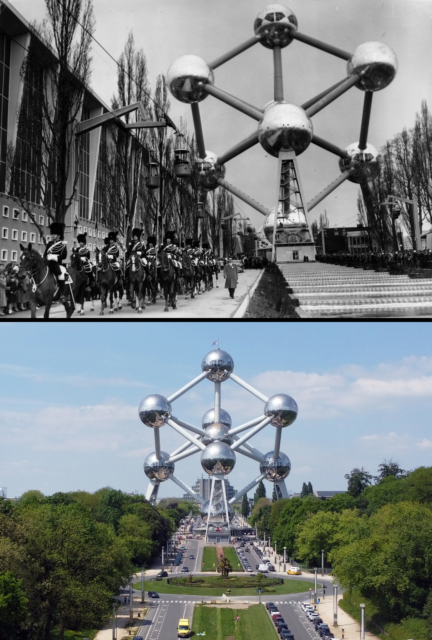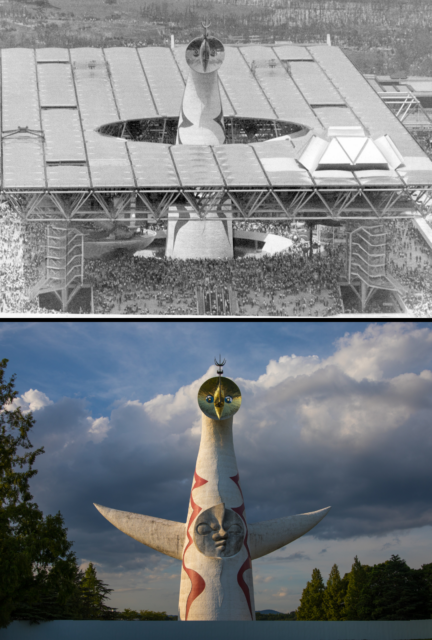The first World’s Fair took place in 1851 in London, England, and since then, the exposition has been hosted all over the world. Year after year, cities build architectural and engineering marvels to wow visitors, but most are usually intended to only be temporary, taken down following the end of the exposition. However, some structures have stood the test of time and still stand to this day, reminding us of the creativity of the past. Read on to learn more.
Memorial Hall, Philadelphia, USA – 1876

Memorial Hall was built for the 1876 Centennial Exposition in Philadelphia and was used as an art gallery. It is the only major structure from that year’s exhibition to survive to this day. In 1976, the building was dubbed a National Historic Landmark and has since been converted into a children’s museum called Please Touch Museum.
Eiffel Tower, Paris, France – 1889

One of the most recognizable structures to ever come out of a World’s Fair is the Eiffel Tower. Built for the 1889 Exposition, the arches of the tower served as the entrance to the fair. When it was first built, it was heavily criticized by the community for being a “gigantic black smokestack,” but since its completion has been lauded as an architectural and artistic marvel and has become a symbol of Paris.
Palace of Fine Arts, Chicago, USA – 1893

Built for the 1893 World’s Columbian Exposition, the Palace of Fine Arts in Chicago is the only original building to still be standing on the fair’s grounds. That year also saw the world’s first Ferris wheel, but it is this building, now converted into the Museum of Science and Industry, that has remained.
Magic Fountain of Montjuïc, Barcelona, Spain – 1929

The Magic Fountain of Montjuïc was built on the Montjuïc mountain for the 1929 Barcelona International Exposition. The project was so large that it required over 3,000 workers to see its completion, but hard work allowed the first show to take place the day before the start of the Exposition. Serving as one of the first water displays of its kind, the fountain continues to perform shows every weekend.
The Atomium, Brussels, Belgium – 1958

Constructed as the centerpiece of the 1958 Brussels World’s Fair, the Atomium was a product of the Atomic Age. Built to resemble an atom enlarged 165 billion times, the structure involves nine spheres, all connected, many of which are visitable by tourists. Its tallest point reaches 335 feet tall, and the highest sphere offers a restaurant and a panoramic view of the city.
Space Needle, Seattle, USA – 1962

Constructed for the 1962 World’s Fair, the Space Needle was inspired by the age of the Space Race. At the time, it stood as the tallest structure west of the Mississippi River at a height of 605 feet, with a UFO-shaped structure at its top. The tower was a huge success at the fair that year and has since become a symbol of the city of Seattle.
Habitat 67, Montreal, Canada – 1967

Habitat 67, named for that year’s Expo 67 in Montreal, is a housing complex comprised of 354 identical, prefabricated concrete blocks. It stands 12 stories tall, holds 146 residential homes, and is considered an architectural landmark. Celebrated as a breakthrough in affordable housing, the homes within the complex are not considered some of the most expensive homes in the city.
Tower of the Sun, Osaka, Japan – 1970

Serving as the symbol of the Expo ’70 that took place in Osaka, Japan, the Tower of the Sun has been preserved and now stands in the Expo Commemoration Park. It features three faces on its front and back, representing the past, present, and future. Visitors of the fair could go inside and climb the 230-foot tower, but after the fair’s closing, it was closed to the public.
Sunsphere, Knoxville, USA – 1982

Built in 1982, the Sunsphere still stands 266 feet tall in the World’s Fair Park in downtown Knoxville, Tennessee. Looking like a disco ball high in the sky, the gold dust-filled lamination allows the top of the structure to shimmer in the sunlight. This and the man-made pond it sits across from are the only remaining structures built from that year’s World Fair.
Read more: Islands Around the Globe Devoid of Human Life
In the ever-evolving tapestry of history, these enduring structures, born from the vibrant spirit of World’s Fairs, stand as timeless monuments to human ingenuity and creativity, weaving together the past and present in a captivating narrative of architectural resilience. As they continue to grace city skylines and capture imaginations, these iconic landmarks serve as living testaments to the enduring legacy of the world’s most celebrated expositions, inviting us to marvel at their beauty and reflect on the boundless possibilities of human achievement across the ages.
